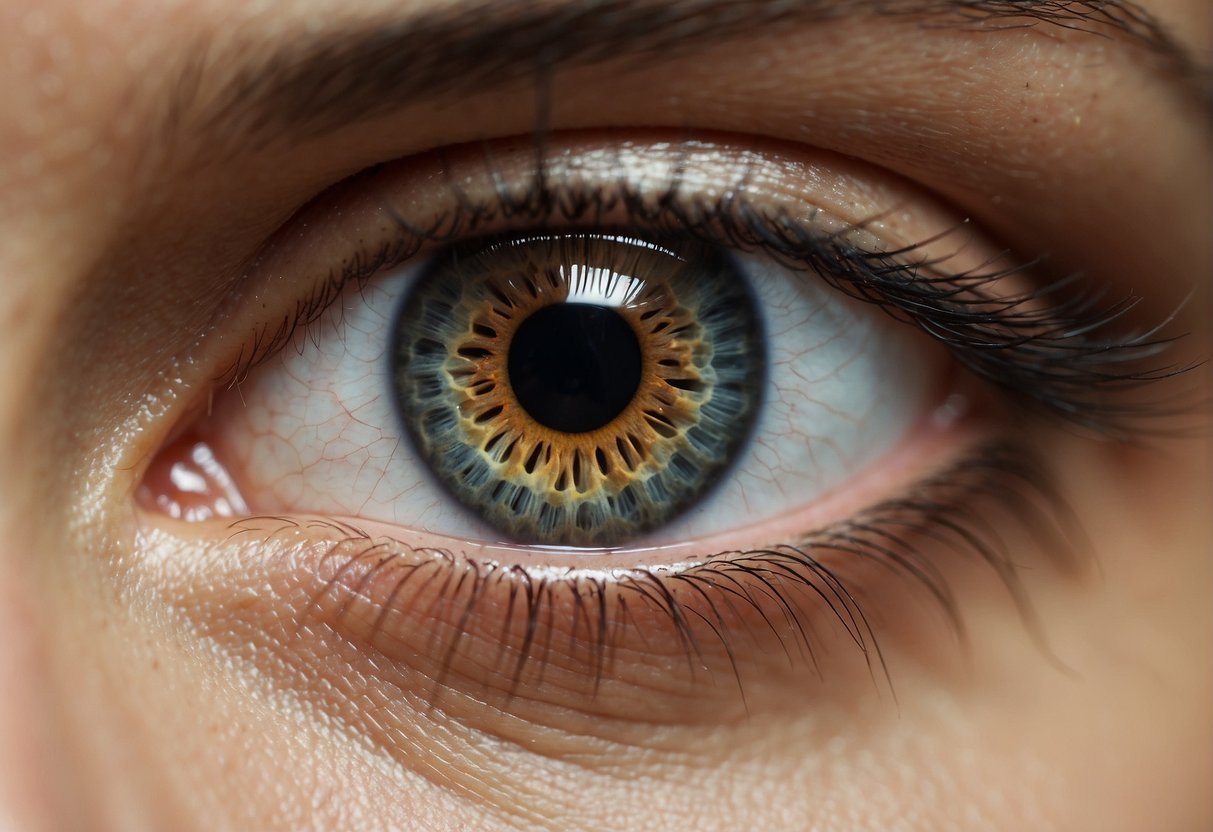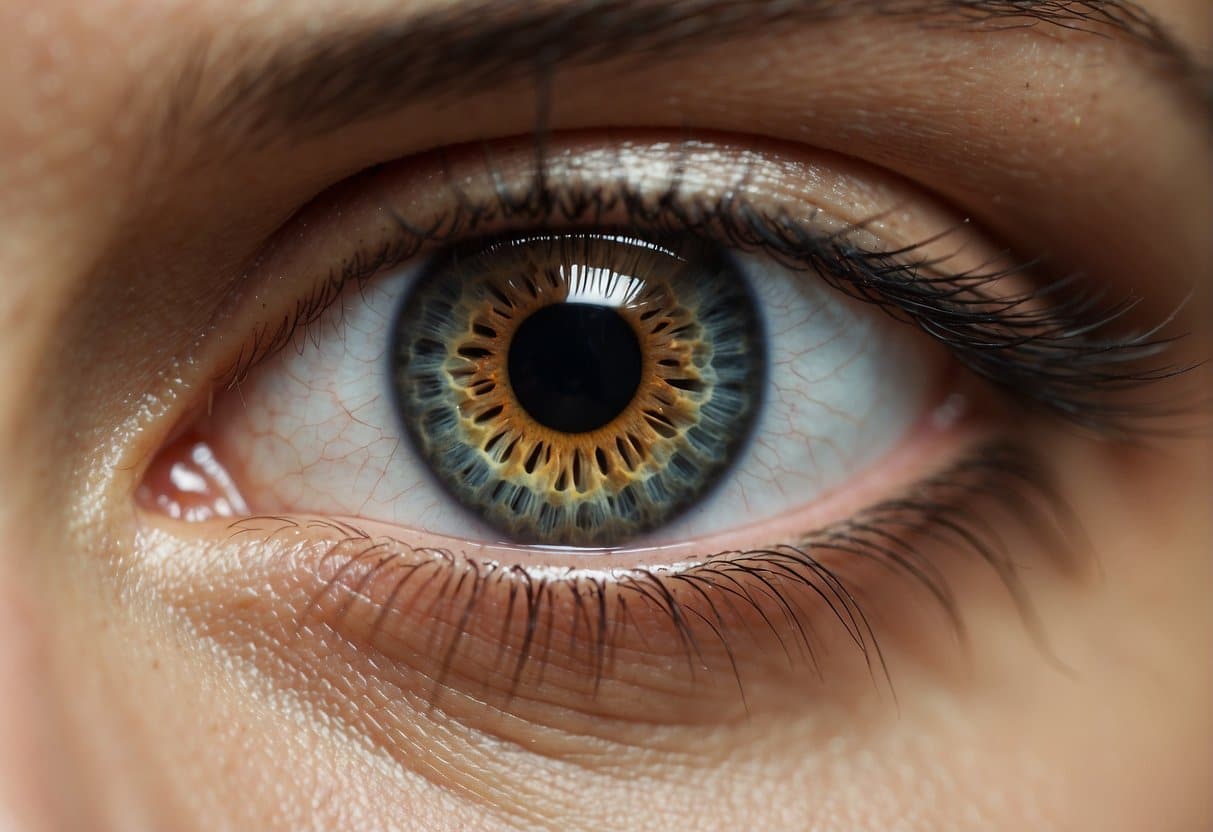Eye twitching, or myokymia, is a common condition that affects individuals worldwide. It’s characterized by involuntary and intermittent spasms or slight movements of the eyelid muscles.
Usually, these spasms are harmless and resolve on their own without the need for medical attention.
Myokymia can affect one or both eyes and it is often felt by the individual as a slight pulling sensation of the eyelid.
The exact causes of eye twitching are not always clear, but several factors may contribute to triggering it.
Stress, fatigue, caffeine, and alcohol have been known to increase the likelihood of experiencing myokymia. In some cases, eye twitching could be a sign of a more serious condition known as blepharospasm or hemifacial spasm.
Blepharospasm is characterized by the abnormal contraction or twitch of the muscles around the eyes and is classified as a form of dystonia, which is a movement disorder involving involuntary muscle contractions.
For most individuals, eye twitching is a temporary and minor annoyance. However, when the twitching is persistent or severe, it can interfere with daily life and may require consultation with a healthcare professional. Treatments vary based on the severity and underlying cause of the twitching.
They range from lifestyle changes and stress reduction techniques for mild cases, to botulinum toxin injections or even surgery for more severe cases of essential blepharospasm. Understanding the underlying causes is the first step towards effectively treating this condition.
Causes and Risk Factors
Eye twitching, characterized by involuntary spasms or contractions of the eyelid muscles, can be associated with various lifestyle choices and medical conditions.

Lifestyle and Environmental Factors
- Stress: Prolonged stress can lead to the twitching of muscles around the eyes.
- Caffeine and Alcohol Intake:
- Caffeine: High caffeine intake can exacerbate eye twitching.
- Alcohol: Similarly, excessive alcohol consumption may trigger eyelid spasms.
- Tobacco Use: Smoking can heighten the risk of eye twitches.
- Sleep Habits:
- Lack of Sleep/Fatigue: Not getting enough rest can lead to sleep deprivation and fatigue, increasing the likelihood of twitching.
- Sleep Deprivation: Chronic sleep deprivation can persistently affect eyelid muscles.
- Exposure to Bright Light: Intense or bright lights can cause strain and trigger eye twitching.
- Screen Time and Eye Strain:
- Excessive screen time without breaks can contribute to eye strain and subsequent twitching.
- Dry Eyes: People with dry eyes may experience more frequent eyelid twitching.
Possible Medical Conditions
- Benign Essential Blepharospasm (BEB): A condition involving chronic blinking and twitching, it is considered a type of dystonia affecting the muscles around the eyes.
- Nervous System Disorders: Various neurological conditions, such as:
- Bell’s Palsy: This condition can cause facial twitching, including the eyes.
- Parkinson’s Disease: Twitching eyelids can be a symptom among individuals with Parkinson’s.
- Tourette Syndrome: Involuntary movements, including eye twitching, are a sign.
- Multiple Sclerosis (MS): MS can manifest symptoms like eye twitching.
- Brain Tumors and Neurological Problems: Any abnormal growth or disease affecting the brain may impact nerve function, leading to eye twitching.
- Dystonia: This disorder causes involuntary muscle contractions and spasms, including of the eyelid.
Diagnosis and Management

Diagnosing and managing eyelid twitching involves identifying the underlying causes, from lifestyle factors to neurological conditions, and implementing suitable treatment protocols tailored to the individual’s symptoms and medical history.
Treatment Options
Symptom Management: For mild cases of eyelid myokymia, which manifests as minor eyelid twitching affecting one eye, simple lifestyle modifications can be effective. Recommendations include:
- Rest: Ensuring adequate sleep can alleviate symptoms.
- Eye Care: Use of artificial tears or eye drops can assist in relieving twitching related to dry eyes.
- Stress Reduction: Techniques such as meditation and breathing exercises may help to manage stress-induced twitching.
- Nutrition: Adequate intake of nutrients, especially magnesium, can address deficiencies that may contribute to twitching.
Medical Interventions: Persistent or severe eyelid twitching, such as hemifacial spasms or other forms of facial dystonia, may require medical treatment:
- Medications: Certain medicines can help control symptoms.
- Botox Injections: Can provide temporary relief from muscle spasms.
- Surgery: A myectomy, which involves removing some of the muscles and nerves of the eyelids, may be considered in extreme cases.
When to See The Doc
A visit to a healthcare professional is warranted if:
- The twitch persists for an extended period.
- It is accompanied by other symptoms, such as facial spasms or difficulty in controlling facial movements.
One should consult with an:
- Ophthalmologist: For primary eye-related symptoms.
- Neurologist or Neuro-Ophthalmologist: For more complex cases involving broader neurological issues.






